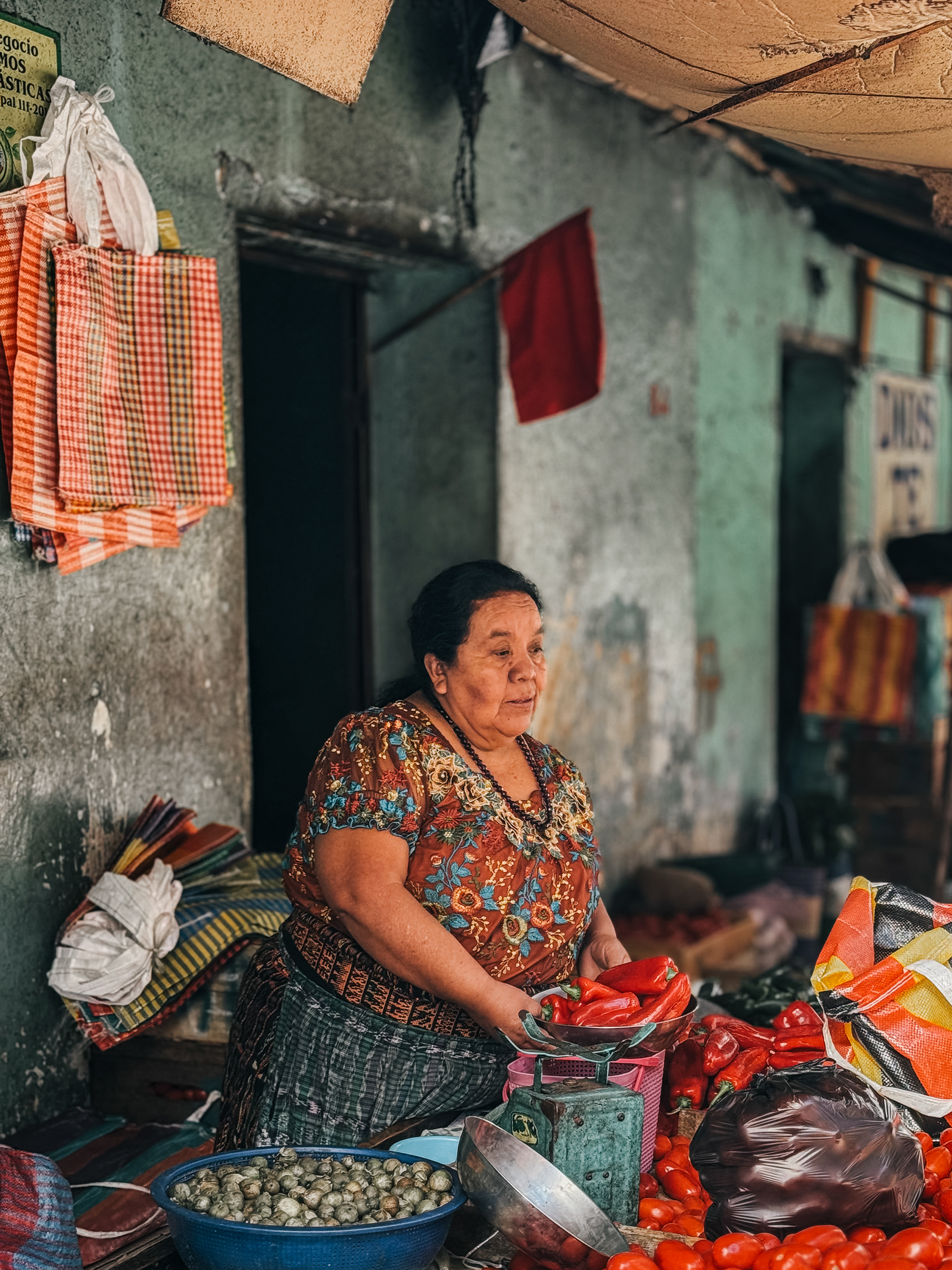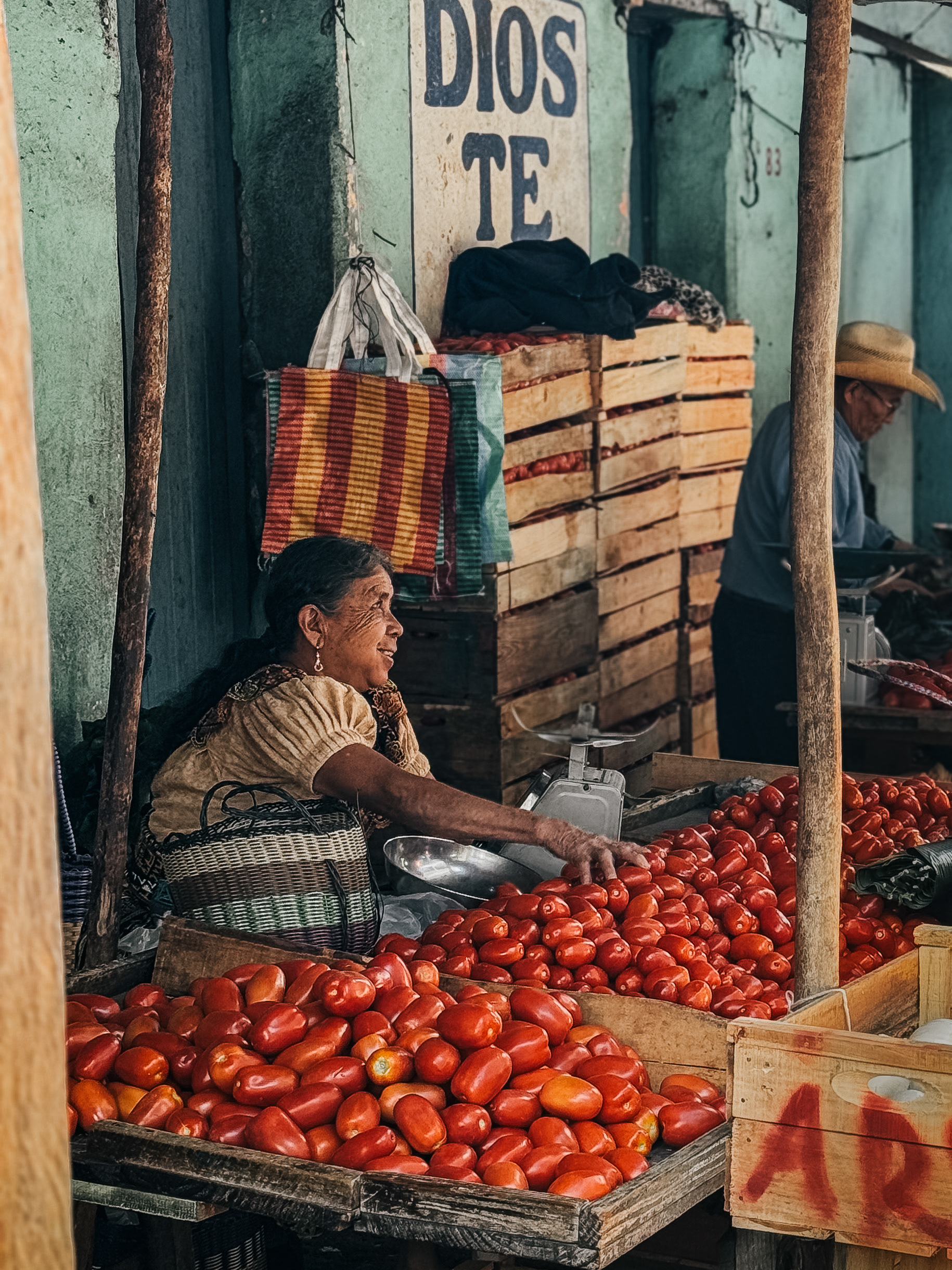“In Lak’ech — You are my other me.”
In every morning, in every market, in every shared gesture, we are bound together.
In every morning, in every market, in every shared gesture, we are bound together.
The market wakes up slowly — voices rise with the sun, mingling with the scent of earth and fruit. The clatter of wooden carts over cobblestones punctuates the hum of conversation. She sits at her stall like she’s been here forever, hands folded over a sack of rice, surrounded by baskets heavy with produce: papayas, rough-skinned and patched with sun spots; green and yellow plantains, scuffed and bruised from travel; and piles of red, black, and white beans, dust clinging to their matte surfaces. Her fingers trace the beans as she arranges them, dirt embedded under her nails. A few spill to the ground with a soft clink; she scoops them back up, dropping them into the basket with a practiced flick. A child reaches to peek at the papayas, and she nudges one gently toward him, the fruit warm from the morning sun. She brushes a stray leaf from the crate, the paper-thin sound crisp in the quiet moments between voices.
Nearby, a vendor lifts a chipped clay cup to his lips, sipping thick, aromatic Guatemalan coffee. The warmth trails through the morning air, mingling with the scent of deep rooted, local culture and the occasional rustle of woven baskets. Nothing feels rushed. Every gesture has its rhythm, every exchange its quiet grace.
The vibrant threads of Mayan culture are visible in the textiles, the patterns telling stories of ancestry, resilience, and place. Lake Atitlán, cradled by volcanoes and steep hillsides, sits roughly 1,562 meters above sea level, its deep waters filling a volcanic caldera carved by centuries of upheaval. The highland climate and rich volcanic soil give Guatemalan coffee its bright, complex flavor; terraced fields cling to the hillsides, each bean a product of toil and tradition. Nearly a dozen villages surround the lake, each with its own dialect, its own rituals, its own weaving style. In San Juan, the air carries the earthy aroma of indigo dye and marigolds, accentuated by the rhythmic hum of weaving looms. Santiago’s streets echo with the clatter of wooden carts and the soft shuffle of footsteps; the embroidery of its shawls whispers stories of local saints and ancestors. From San Pedro, splashes of waves drift across the water as 'lanchas' dock at the pier, mingling with the chatter of early risers. Every stall carries the mark of a community, a story passed down through generations — a living map of Mayan culture.
Meandering slowly through the market, the scent of roasting corn and freshly made chuchitos curls from nearby stalls, blending with the sharp sweetness of tropical fruits stacked high in wooden crates. Women in embroidered huipils barter gently, their voices rising and falling like music. Children weave through the aisles, laughter bounces off the terracotta rooftops. Locals carts creak as they roll over cobblestones, footsteps tap and echo, and baskets shift and rustle under the weight of hands at work. Fingers brush the woven fibers, sending a soft swish through the textiles. Coins clink lightly as they change hands.
Sunlight glints on the calm surface of Lake Atitlán, painting the hillsides gold and green, while distant volcanoes — San Pedro, Tolimán, and Atitlán — stand sentinel, their peaks brushing the sky. Commerce and tradition intertwine here; markets are not just for goods but for the quiet weaving of lives together, carried on for generations.
She looks up and smiles, the kind that carries a lifetime of mornings like this one. In that moment, the noise fades, and all that remains is a genuine human connection — simple, enduring, and palpable.
“In Lak’ech.”
"You are my other me."
"You are my other me."


